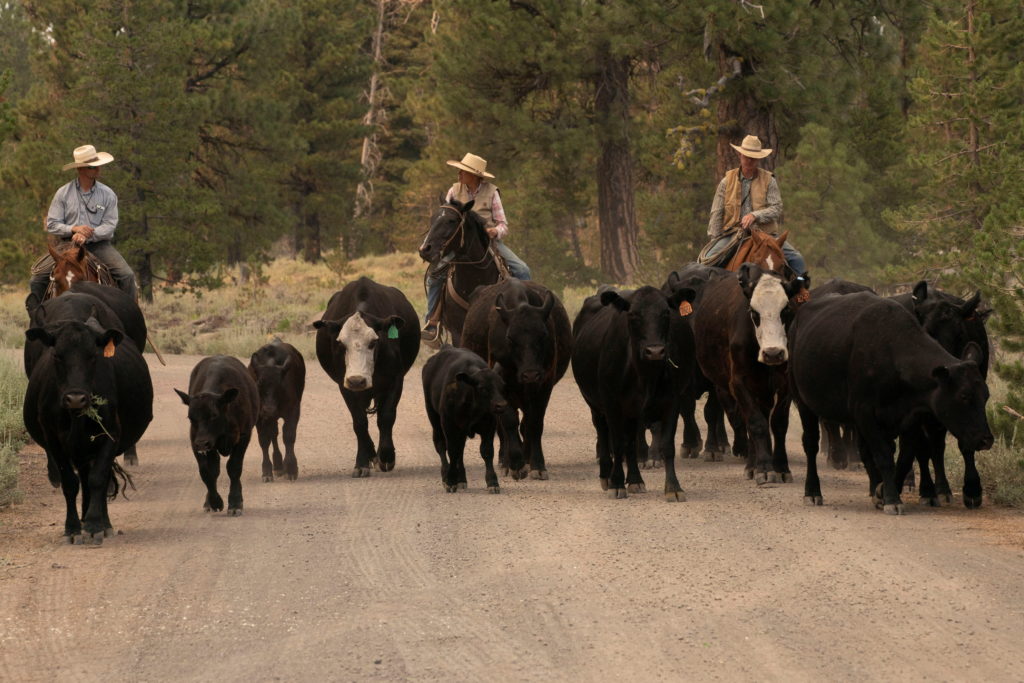STEAMBOAT SPRINGS, Colo. (AP) — With his cattle ranch threatened by a deepening drought, Jim Stanko isn’t cheered by the coming storm signaled by the sound of thunder.
“Thunder means lightning, and lightning can cause fires,” said Stanko, who fears he’ll have to sell off half his herd of about 90 cows in Routt County outside of Steamboat Springs, Colorado if he can’t harvest enough hay to feed them.
As the drought worsens across the West and ushers in an early fire season, cattle ranchers are among those feeling the pain. Their hay yields are down, leading some to make the hard decision to sell off animals. To avoid the high cost of feed, many ranchers grow hay to nourish their herds through the winter when snow blankets the grass they normally graze.
READ MORE: What’s causing the drought in the West — and why it’s so bad
But this year, Stanko’s hay harvest so far is even worse than it was last year. One field produced just 10 bales, down from 30 last year, amid heat waves and historically low water levels in the Yampa River, his irrigation source.
Some ranchers aren’t waiting to reduce the number of mouths they need to feed.
At the Loma Livestock auction in western Colorado, sales were bustling earlier this month even though its peak season isn’t usually until the fall when most calves are ready to be sold. Fueling the action are ranchers eager to unload cattle while prices are still strong.
“Everybody is gonna be selling their cows, so it’s probably smarter now to do it while the price is up before the market gets flooded,” said Buzz Bates, a rancher from Moab, Utah who was selling 209 cow-calf pairs, or about 30% of his herd.
Bates decided to trim his herd after a fire set off by an abandoned campfire destroyed part of his pasture, curbing his ability to feed them.
Weather has long factored into how ranchers manage their livestock and land, but those choices have increasingly centered around how herds can sustain drought conditions, said Kaitlynn Glover, executive director of natural resources at the National Cattlemen’s Beef Association.
READ MORE: U.S. report says more must be done to protect Colorado River from drought
“If it rained four inches, there wouldn’t be a cow to sell for five months,” said George Raftopoulos, owner of the auction house.
Raftopoulos says he encourages people to think twice before parting with their cows. Having to replace them later on might cost more than paying for additional hay, he said.
Culling herds can be an operational blow for cattle ranchers. It often means parting with cows selected for genetic traits that are optimal for breeding and are seen as long-term investments that pay dividends.
Jo Stanko, Jim’s wife and business partner, noted her cows were bred for their ability to handle the region’s temperature swings.
“We live in a very specialized place,” she said. “We need cattle that can do high and low temperatures in the same day.”
As the Stankos prepare to shrink their herd, they’re considering new lines of work to supplement their ranching income. One option on the table: offering hunting and fishing access or winter sleigh rides on their land.
The couple will know how many more cattle they’ll need to sell once they’re done storing hay in early September. They hope to cull just 10, but fear it could be as many as half the herd, or around 45 head.
Already, the family sold 21 head last year after a disappointing hay harvest. This year, the crop is even worse.
“With the heat, it’s burning up. I can’t cut it fast enough,” Jim Stanko said of the hay crop.













































